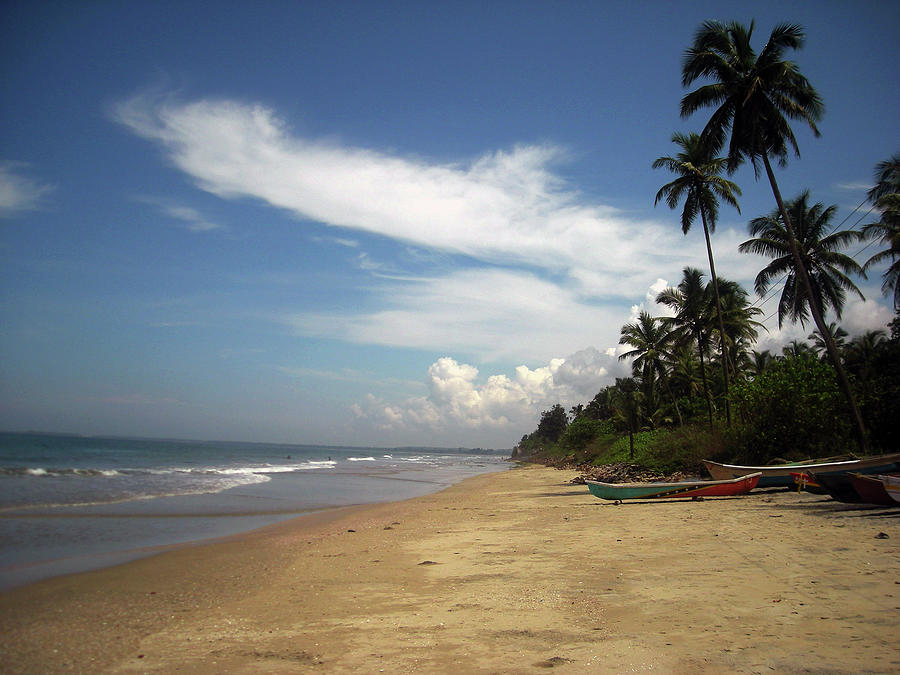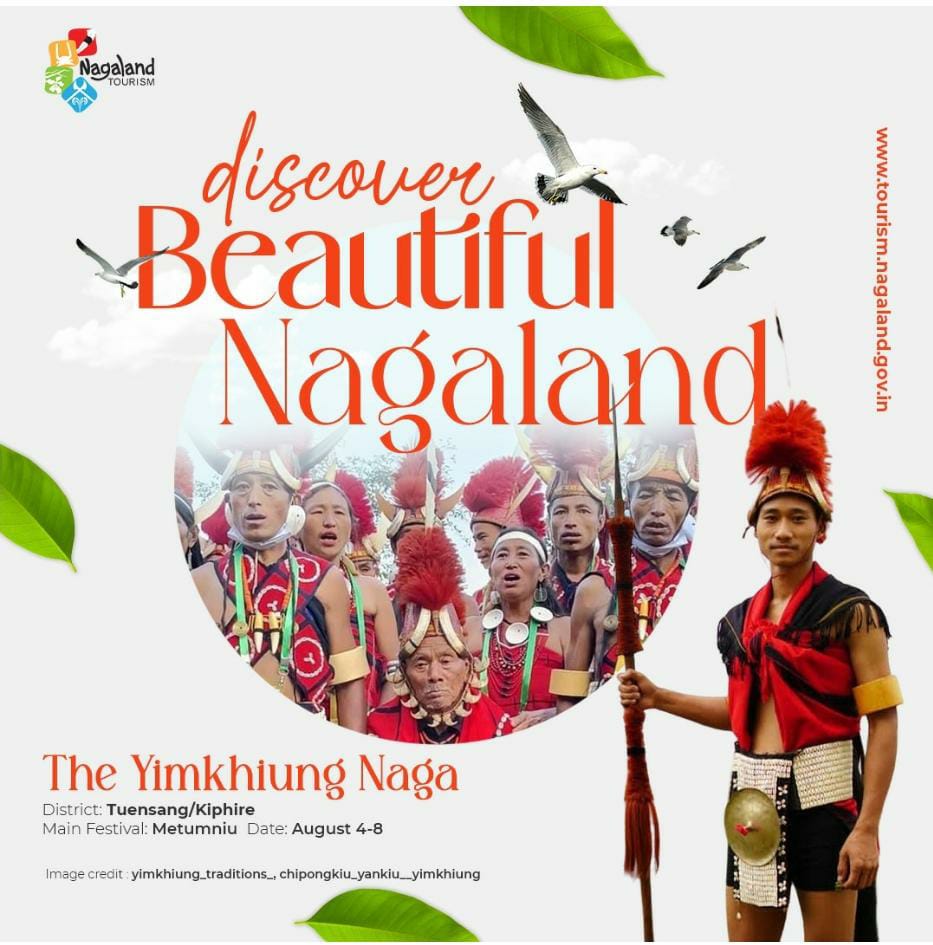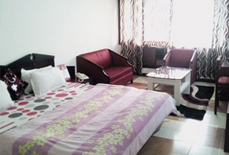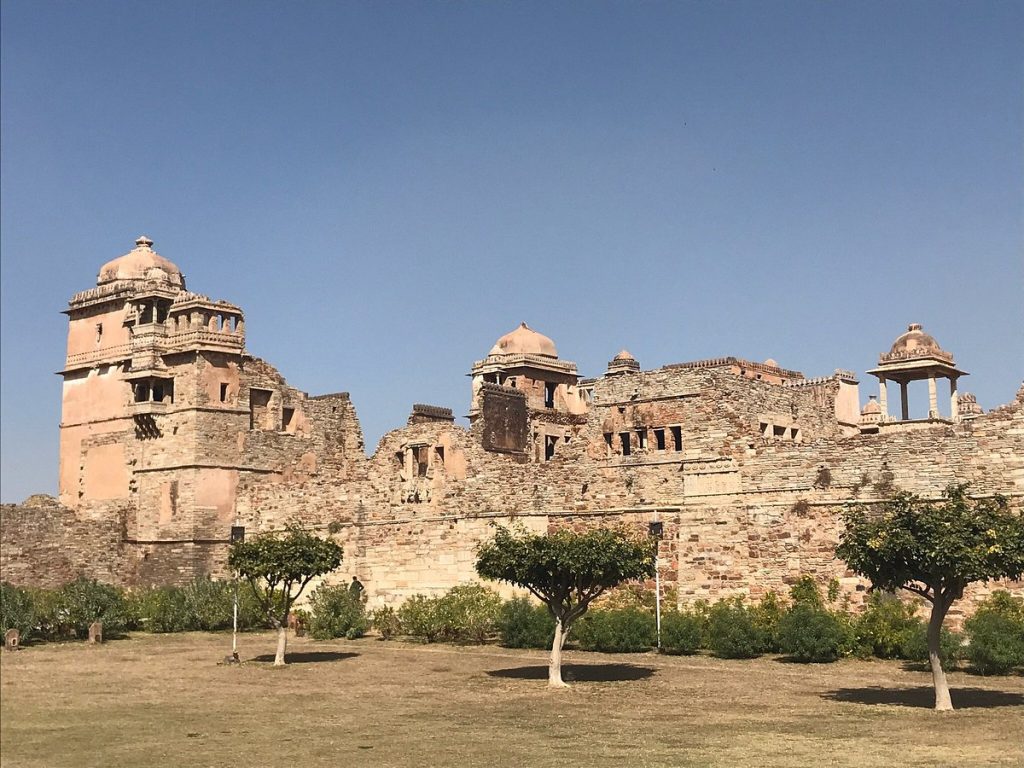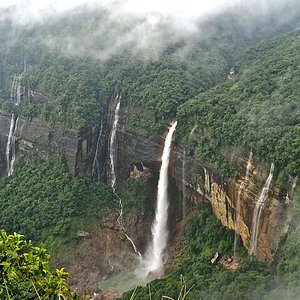Rana Kumbha Palace in Chittorgarh is a historic marvel. This palace showcases rich Rajput architecture and history.
Nestled in the heart of Chittorgarh, Rana Kumbha Palace stands as a testament to the grandeur of Rajputana. Built by Maharana Kumbha during the 15th century, this palace has witnessed numerous historical events and battles. The magnificent structure includes beautiful courtyards, temples, and underground cellars.
The palace’s intricate design and majestic appearance attract tourists and history lovers alike. Walking through its corridors, one can almost hear the echoes of the past. Exploring Rana Kumbha Palace offers a glimpse into the royal lifestyle and bravery of the Rajput warriors. Dive into the rich tapestry of history and discover the stories hidden within its walls.
Historical Background
The Rana Kumbha Palace in Chittorgarh is a symbol of India’s rich heritage and architectural prowess. Nestled in the heart of Chittorgarh Fort, this majestic palace offers a glimpse into the grandeur of the bygone era. Understanding its historical background can help you appreciate its significance even more.
Early Construction
The construction of Rana Kumbha Palace dates back to the 15th century. Commissioned by Maharana Kumbha, a legendary ruler of Mewar, this palace was built as a royal residence. It served not only as a home but also as a strategic stronghold during turbulent times.
Imagine walking through its ancient corridors, knowing they were once traversed by kings, queens, and warriors. The palace has witnessed countless historical events, from royal ceremonies to fierce battles. Its walls are silent storytellers, echoing tales of valor and legacy.
Architectural Style
The architectural style of Rana Kumbha Palace is a blend of Rajput and Mughal influences. You will notice intricate carvings and detailed frescoes adorning its walls. These artistic elements provide insight into the craftsmanship of the era.
One of the most striking features is its massive courtyards. These open spaces were designed for public gatherings and royal functions. Walking through these courtyards, you might feel the aura of grandeur and imagine the lively scenes of past celebrations.
Another fascinating aspect is the palace’s strategic design. It includes secret tunnels and hidden chambers, which were used for escape during sieges. Exploring these hidden pathways can be thrilling, making you wonder about the palace’s role in defending its inhabitants.
As you delve deeper into the architectural details, you might ponder: How did the craftsmen achieve such precision without modern tools? What stories do these walls hold that we still don’t know?
Visiting the Rana Kumbha Palace isn’t just a historical tour; it’s an immersive experience. It invites you to step back in time and connect with the legacy of Mewar. So, next time you visit Chittorgarh, ensure you walk through this palace with eyes wide open, embracing its history and marveling at its architectural brilliance.
Rana Kumbha’s Reign
Rana Kumbha’s reign marked a significant era in Indian history. He ruled the kingdom of Mewar in the 15th century. His rule is remembered for great military achievements and cultural contributions. The Rana Kumbha Palace in Chittorgarh stands as a testament to his legacy.
Military Achievements
Rana Kumbha was known for his military prowess. He expanded the kingdom’s territory through numerous battles. His most notable victory was against the Sultan of Malwa. This victory secured Mewar’s borders and increased its influence.
Rana Kumbha also built several forts to protect his kingdom. The Kumbhalgarh Fort is the most famous. Its walls stretch over 36 kilometers, making it one of the longest in the world. These forts helped secure Mewar from invasions.
Cultural Contributions
Rana Kumbha was not just a warrior. He also promoted arts and culture. Under his rule, many temples and palaces were built. The Rana Kumbha Palace itself is a fine example of architecture from that era.
He supported poets, musicians, and scholars. His court became a center for learning and culture. The Rana composed several hymns and texts in Sanskrit. This blend of military and cultural achievements makes his reign unique.
Architectural Highlights
Rana Kumbha Palace in Chittorgarh stands as a testament to Rajput architecture. Its design reflects a blend of strength and elegance. Each element of the palace tells a story of the past. Let’s explore some of these fascinating features.
Fortifications
The palace boasts impressive fortifications. These walls were built to protect from invasions. Their massive structure is awe-inspiring. Made of stone, they have stood the test of time. The walls are thick and high, creating an imposing sight. They served to keep enemies at bay. The strategic placement of these walls shows advanced defensive planning. Walking along these fortifications, one can feel the history.
Secret Tunnels
Secret tunnels in Rana Kumbha Palace add to its mystery. These tunnels were used for escape during sieges. Hidden and intricate, they connect different parts of the palace. The tunnels reveal the palace’s hidden depths. They were a crucial part of its defense system. Exploring these tunnels gives a sense of adventure. Imagine the stories they could tell! The ingenuity behind these tunnels is remarkable. They are an integral part of the palace’s design.

Credit: www.incredibleindia.gov.in
Life Inside The Palace
Rana Kumbha Palace in Chittorgarh showcases majestic architecture. It offers a glimpse into royal life, complete with spacious courtyards and grand halls. The palace’s intricate designs and historic significance captivate visitors.
Life Inside the Palace Stepping into the Rana Kumbha Palace in Chittorgarh feels like traveling back in time. This grand palace, rich with history and heritage, offers a glimpse into the opulent life of the royals. But have you ever wondered what daily life was like within these historic walls? Let’s explore the fascinating daily routines and royal court activities that defined life inside this majestic palace.Daily Routines
Life inside the Rana Kumbha Palace was a mix of grandeur and discipline. The day would start early, often at the crack of dawn. Servants and attendants would be up first, preparing the palace for the day ahead. Imagine the hustle and bustle as they cleaned, fetched water, and prepared breakfast. The royals, on the other hand, had their own routines. The Maharana would typically begin his day with a prayer or a visit to the temple within the palace grounds. Spirituality was a cornerstone of daily life, and these early morning rituals set a tranquil tone for the day. Meals were another important part of daily life. Traditional Rajasthani dishes were prepared with great care, using fresh ingredients. Meals were not just about food; they were a time for the family to come together, share news, and discuss the day’s plans.Royal Court Activities
The royal court was the heart of the palace’s activities. It was a place where important decisions were made, and strategies were discussed. The Maharana would hold court sessions where ministers, advisors, and noblemen gathered. These sessions were vital for the administration and governance of the kingdom. Every session started with a formal ceremony. The Maharana would take his seat on the ornate throne, a symbol of his authority. Courtiers and ministers would present their reports and seek the Maharana’s guidance on various issues. This was also the time when disputes were resolved, and judgments were passed. The palace was not all work and no play. Cultural performances were a regular feature. Musicians, dancers, and poets would entertain the royal family and their guests. These performances were not just for entertainment; they were a way to preserve and promote the rich cultural heritage of Mewar. Imagine attending one of these sessions. The air filled with the sound of traditional instruments, the vibrant colors of the performers’ costumes, and the palpable excitement in the room. It was a feast for the senses. Life inside the palace was a blend of duty and delight. It was about maintaining the grandeur of the royal lifestyle while ensuring the smooth administration of the kingdom. Each day brought its own set of challenges and celebrations, making life inside the Rana Kumbha Palace both unique and fascinating. Have you ever visited a historic palace and wondered about the lives of those who lived there? How do you think their daily routines compare to ours today? The lives of the royals might seem distant, but in many ways, their routines were similar to ours—centered around family, work, and the joys of life.Legends And Myths
Rana Kumbha Palace in Chittorgarh brims with legends and myths. Tales of royal ghosts and hidden treasures captivate visitors. The palace’s ancient walls whisper stories of valor and mystery.
### Legends and Myths Rana Kumbha Palace in Chittorgarh is not just an architectural marvel but also a treasure trove of legends and myths. These tales have been passed down through generations, adding an aura of mystery and intrigue to the palace. Whether you’re a history buff or a casual visitor, the stories surrounding this palace will captivate your imagination. ####Ghost Stories
Ghost stories are perhaps the most spine-chilling part of the legends tied to Rana Kumbha Palace. Many locals and visitors alike claim to have felt an eerie presence while wandering its ancient corridors. One of the most famous ghost stories is about the spirit of Queen Padmini. It is said that her ghost still roams the palace, lamenting the tragic end of her life. Imagine walking through the dimly-lit halls and feeling a sudden chill. It’s enough to send shivers down your spine! Some visitors have even reported hearing whispers and soft footsteps when no one else was around. It’s not uncommon to find people who refuse to visit the palace after sunset. Would you dare to explore these haunted halls? ####Historical Anecdotes
Beyond ghost stories, the palace is also steeped in rich historical anecdotes. These tales offer a glimpse into the valiant lives of the Rajput kings and queens who once resided here. One such anecdote revolves around Rana Kumbha himself. Known for his bravery and architectural genius, he is said to have designed the palace with secret tunnels and escape routes. During times of siege, these hidden paths were used to transport supplies and people safely out of the fort. Another interesting story is about the Jauhar Kund, the place where Rajput women committed Jauhar (self-immolation) to protect their honor. The sheer courage and sacrifice of these women are heart-wrenching yet awe-inspiring. These historical snippets enrich your visit, making you appreciate the palace not just as a monument but as a witness to countless tales of heroism and tragedy. — The legends and myths surrounding Rana Kumbha Palace are as captivating as its architecture. Whether you are drawn by ghost stories or historical anecdotes, the palace offers something for everyone. So, next time you find yourself in Chittorgarh, take the time to explore these stories. They might just make your visit unforgettable. What’s your take on these legends? Do you believe in the paranormal, or do you think these are just tales to add to the palace’s allure? Share your thoughts!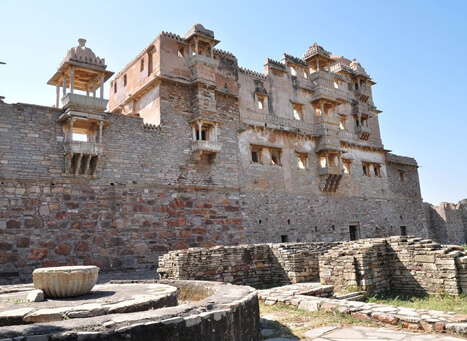
Credit: www.tourmyindia.com
Tourist Attractions
Rana Kumbha Palace in Chittorgarh is a fascinating place to visit. Tourists flock here to explore its rich history and stunning architecture. This palace offers numerous attractions that captivate all who visit.
Guided Tours
Guided tours offer a deeper insight into Rana Kumbha Palace’s history. Knowledgeable guides share intriguing stories and facts. These tours make the visit educational and engaging. They ensure you don’t miss any important details.
Guides explain the significance of each site within the palace. They also highlight unique architectural features. A guided tour enhances the overall experience. You leave with a greater appreciation of the palace’s history.
Key Sites To Visit
The palace boasts several key sites that you must see. The main courtyard is a central attraction. It features beautiful stone carvings and ancient structures. Another must-visit site is the underground cellars.
These cellars are steeped in history and mystery. The palace also includes a grand temple. This temple showcases stunning religious art and design. Each site within the palace tells a unique story.
Don’t miss the palace’s majestic towers. They offer panoramic views of the surrounding area. The towers are perfect for photography enthusiasts. Capture the beauty of Chittorgarh from above.
Preservation Efforts
Preservation efforts are crucial to keep the historic Rana Kumbha Palace in Chittorgarh standing. This majestic palace, rich in history and culture, needs constant care. Dedicated teams work tirelessly to preserve its grandeur for future generations.
Restoration Projects
Restoration projects have played a key role in maintaining the palace’s integrity. Experts use traditional methods to restore the palace’s original beauty. They repair damaged structures and replace worn-out materials with care. These efforts ensure the palace remains true to its historical roots.
Restoration is a continuous process at Rana Kumbha Palace. Skilled artisans work on the intricate carvings and murals. They pay attention to every detail, ensuring historical accuracy. Their dedication helps the palace retain its charm.
Historical Significance
The palace’s historical significance drives these preservation efforts. Built in the 15th century, it witnessed many key events. It served as a royal residence and a fortification. This makes it an important landmark in Indian history.
Rana Kumbha Palace is a symbol of Rajput pride and heritage. Preservation efforts honor this legacy. They help educate visitors about the rich history of Chittorgarh. The palace stands as a testament to the architectural genius of its time.
Visitor Information
Rana Kumbha Palace in Chittorgarh holds immense historical importance. Tourists flock here to witness its grandeur. Knowing the essential visitor information can enhance your experience.
Opening Hours
Rana Kumbha Palace welcomes visitors every day. The palace opens at 9 AM and closes at 6 PM. Plan your visit early to enjoy the serene atmosphere. The mornings are less crowded, offering a peaceful exploration.
Travel Tips
Wear comfortable footwear. The palace grounds are vast. Carry a water bottle to stay hydrated. The local climate can get hot, especially in summer. A hat and sunglasses can provide relief from the sun. Keep a camera handy. You’ll want to capture the stunning architecture. Reading about the palace’s history before your visit can make your tour more enriching.
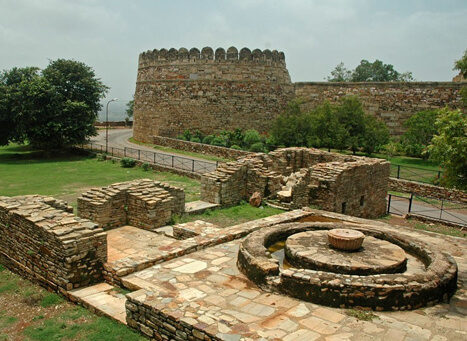
Credit: www.tourmyindia.com
Frequently Asked Questions
What Is The History Of Rana Kumbha Palace In Chittorgarh?
Rana Kumbha Palace, located in Chittorgarh, was built in the 15th century by Rana Kumbha. The palace showcases Rajput architecture. It is known for its historical significance and stunning design. The palace witnessed many important events, including Rani Padmini’s jauhar.
What Is Rana Kumbha Famous For?
Rana Kumbha is famous for his architectural achievements and military prowess. He built the Kumbhalgarh Fort, a UNESCO World Heritage site.
Which Monument Was Built By Rana Kumbha?
Rana Kumbha built the Kumbhalgarh Fort in Rajasthan. This magnificent fort is known for its massive walls and historical significance.
What Is The Story Behind Chittorgarh Fort?
Chittorgarh Fort, built in the 7th century, symbolizes Rajput valor and resistance. The fort witnessed battles, heroism, and tragic sacrifices.
Conclusion
Exploring Rana Kumbha Palace in Chittorgarh is a memorable journey. The palace’s history and architecture captivate visitors. Each corner tells a story from the past. The beauty and grandeur leave a lasting impression. Visiting the palace offers a glimpse into Rajasthan’s rich heritage.
Plan your trip and experience this historic marvel firsthand. The memories will stay with you forever.
{ “@context”: “https://schema.org”, “@type”: “FAQPage”, “mainEntity”: [ { “@type”: “Question”, “name”: “What is the history of Rana Kumbha Palace in Chittorgarh?”, “acceptedAnswer”: { “@type”: “Answer”, “text”: “Rana Kumbha Palace, located in Chittorgarh, was built in the 15th century by Rana Kumbha. The palace showcases Rajput architecture. It is known for its historical significance and stunning design. The palace witnessed many important events, including Rani Padmini’s jauhar.” } } , { “@type”: “Question”, “name”: “What is Rana Kumbha famous for?”, “acceptedAnswer”: { “@type”: “Answer”, “text”: “Rana Kumbha is famous for his architectural achievements and military prowess. He built the Kumbhalgarh Fort, a UNESCO World Heritage site.” } } , { “@type”: “Question”, “name”: “Which monument was built by Rana Kumbha?”, “acceptedAnswer”: { “@type”: “Answer”, “text”: “Rana Kumbha built the Kumbhalgarh Fort in Rajasthan. This magnificent fort is known for its massive walls and historical significance.” } } , { “@type”: “Question”, “name”: “What is the story behind Chittorgarh Fort?”, “acceptedAnswer”: { “@type”: “Answer”, “text”: “Chittorgarh Fort, built in the 7th century, symbolizes Rajput valor and resistance. The fort witnessed battles, heroism, and tragic sacrifices.” } } ] }
